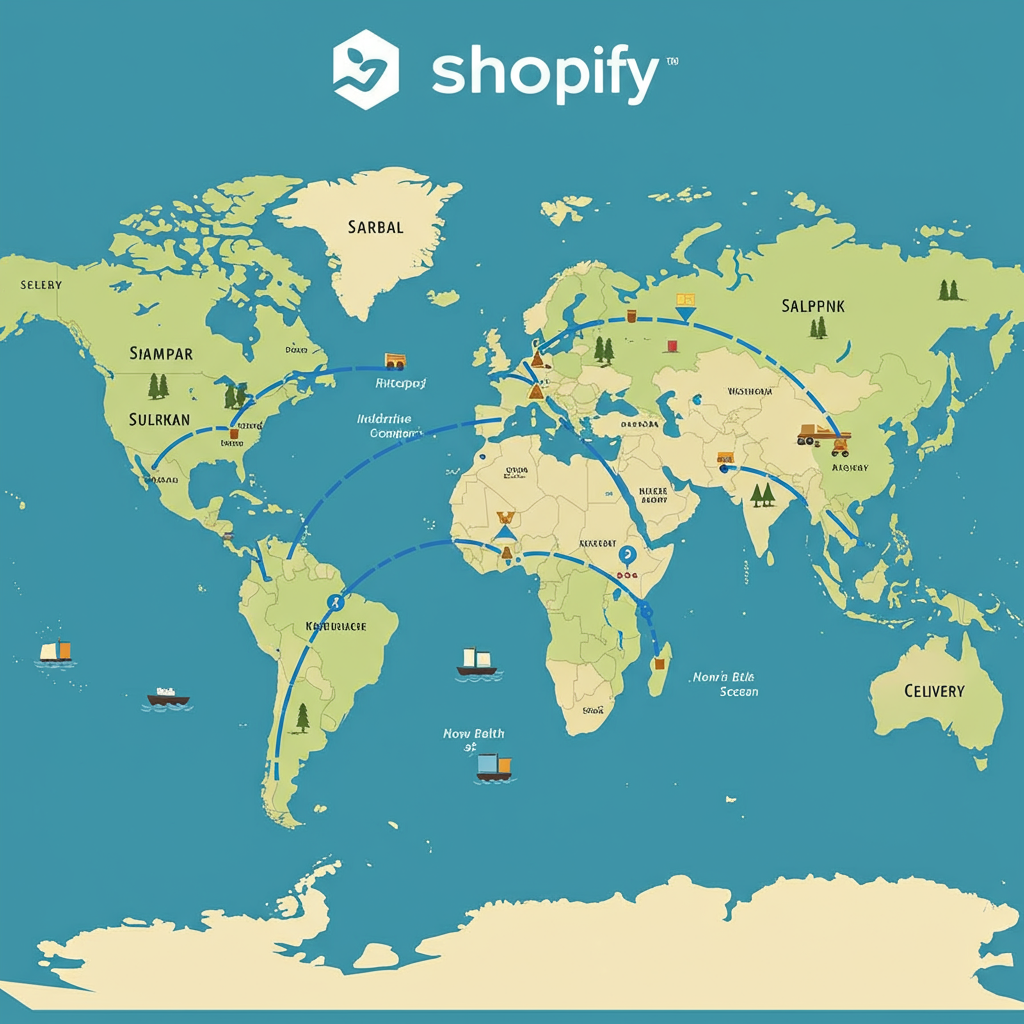Unlocking new markets and mastering cross-border fulfillment for your Shopify store.
As a Shopify merchant, I’ve always been fascinated by the idea of reaching customers beyond my local borders. The global marketplace is vast, and the potential for growth is immense.
However, I know that for many, the thought of international shipping can feel incredibly daunting. Customs forms, duties, different carriers, and varying regulations can seem like a complex maze.
But I’m here to tell you that it’s entirely manageable. Over time, I’ve developed a robust strategy for handling international orders on Shopify, and I want to share my insights with you.
My goal is to demystify the process and provide you with actionable steps to confidently expand your store’s reach worldwide.
The first step I always take is thorough research into potential target markets. It’s not just about where your product might be popular.
I consider factors like import restrictions, local consumer preferences, and even the average income levels in different countries.
Understanding the legal landscape is crucial. Different countries have unique regulations regarding product types, labeling, and even packaging materials.
I make sure to check for any specific certifications or compliance requirements my products might need before I even think about shipping there.
Choosing the right shipping carriers is paramount. I typically look at a mix of global giants and national postal services.
For speed and reliability, I often lean on carriers like DHL, FedEx, and UPS. They offer comprehensive tracking and often handle customs clearance more efficiently.
However, for lighter, less time-sensitive items, I find that national postal services (like USPS, Royal Mail, or Canada Post) can be significantly more cost-effective.
I often integrate multiple carriers into my Shopify setup, allowing customers to choose based on their preference for speed versus cost.
This flexibility has been a game-changer for my international customers.
Setting up accurate shipping rates on Shopify is another critical component of my strategy. I explore various options.
Calculated rates, pulled directly from the carrier, offer the most accuracy, ensuring customers pay the exact shipping cost.
Sometimes, I opt for flat rates for specific regions or product types, but this requires careful calculation to avoid undercharging or overcharging.
I’ve also experimented with offering free international shipping, especially for higher-value orders. This can be a powerful conversion tool, but I always factor the shipping cost into my product pricing.
Transparency is key. I make sure my shipping policies are clearly outlined on my website, so customers know exactly what to expect before they even reach checkout.
Now, let’s talk about the elephant in the room: customs, duties, and taxes. This is often the most confusing part for merchants.
There are two main approaches: DDU (Delivery Duty Unpaid) and DDP (Delivery Duty Paid).
With DDU, the customer is responsible for paying any duties, taxes, or customs fees upon arrival of the package in their country. This can lead to unexpected costs for the customer and potentially refused deliveries.
I generally prefer DDP where possible. This means I collect the duties and taxes upfront, either by absorbing them or by using a Shopify app that calculates and charges them at checkout.
Providing a DDP experience creates a smoother, more predictable experience for the customer, reducing the chances of surprises or delays.
Accurate HS (Harmonized System) codes are non-negotiable. These international codes classify your products for customs purposes, ensuring correct duties are applied.
I meticulously assign the correct HS code to each product in my Shopify store, as this prevents delays and potential fines.
Proper packaging is vital for international shipments. Your products will travel long distances and endure various handling conditions.
I use sturdy boxes, ample cushioning, and waterproof materials to protect my items. It’s an investment that pays off in reduced damage claims.
Clear and accurate shipping labels are also essential. I ensure all necessary customs forms are attached and filled out completely and legibly.
Providing tracking information is not just a courtesy; it’s a necessity. I make sure every international order has a tracking number that customers can easily access.
Proactive communication about shipping status, especially for international orders, builds immense trust. If there are delays, I inform my customers immediately.
A clear and fair international return policy is crucial. I outline the steps for international returns, who covers the return shipping costs, and how refunds are processed.
It’s important to make this policy easily accessible and understandable for your global customers.
Leveraging Shopify’s built-in features and apps has been instrumental in streamlining my international shipping process.
Shopify’s multi-currency feature allows customers to browse and pay in their local currency, which significantly enhances the shopping experience.
I also explore various Shopify apps designed for international shipping. These can help automate duty calculations, generate customs forms, and even integrate with multiple carriers.
These apps save me a tremendous amount of time and reduce the likelihood of errors.
Finally, I prepare my customer service team for international inquiries. This means being aware of different time zones and potentially language barriers.
I ensure we have resources to answer common international shipping questions quickly and accurately.
What do you think about these strategies? Have you found similar success or faced different challenges?
Embracing international shipping has opened up incredible opportunities for my Shopify store.
While it requires careful planning and attention to detail, the rewards of reaching a global audience are well worth the effort.
I encourage you to take the leap and start exploring the vast potential of international sales for your own Shopify business.
With the right strategy, you can confidently expand your reach and watch your business grow across borders.






